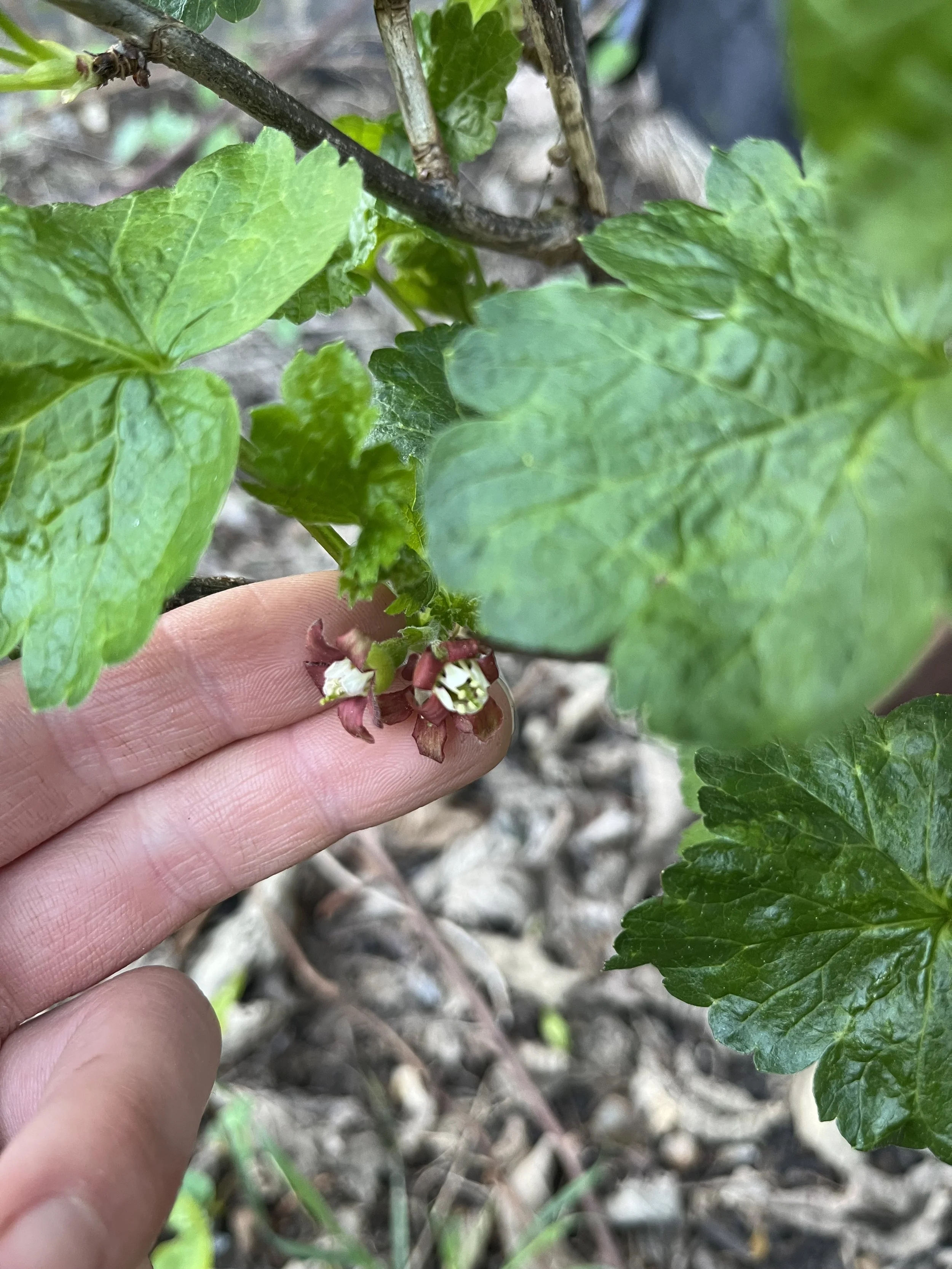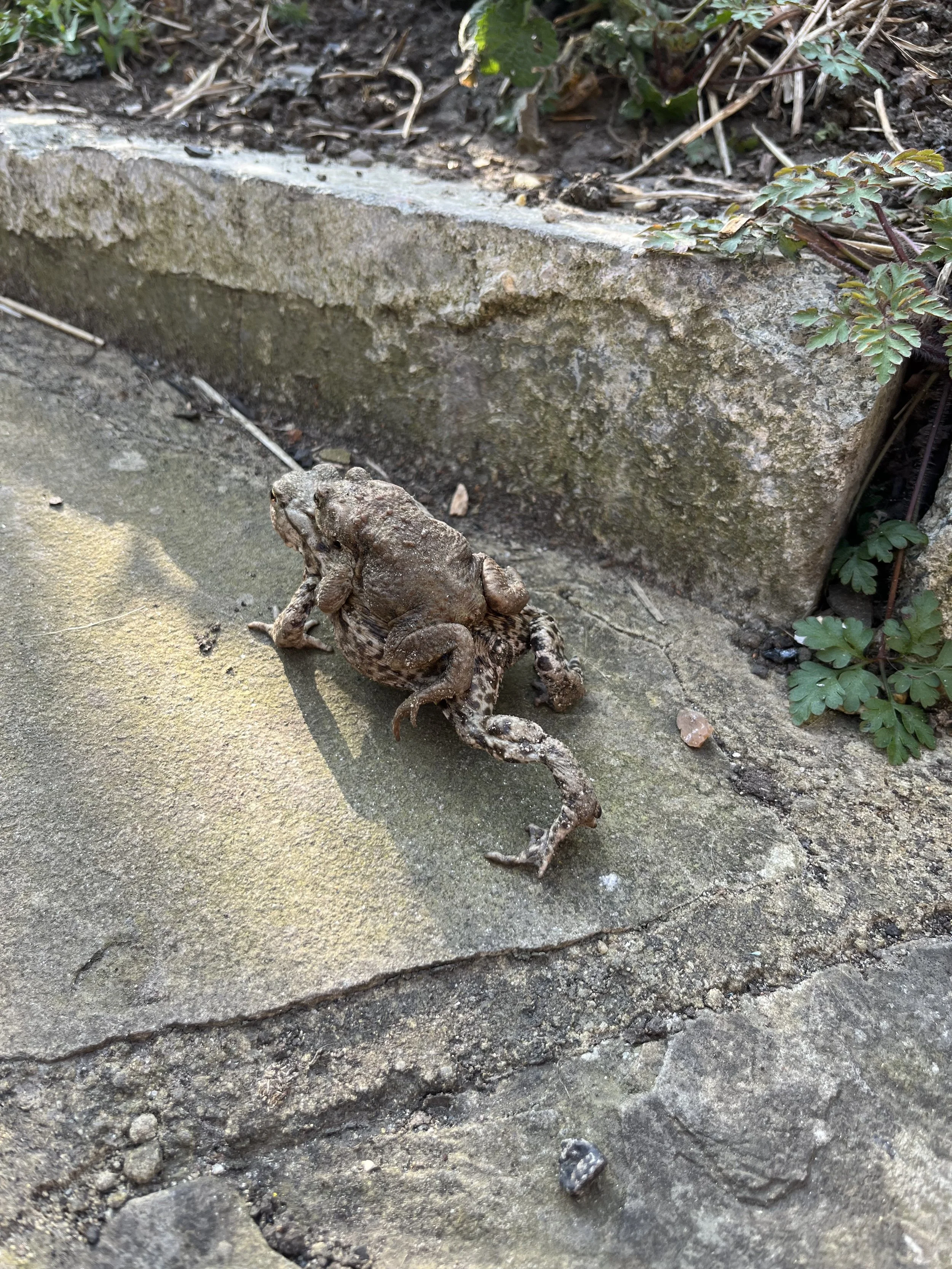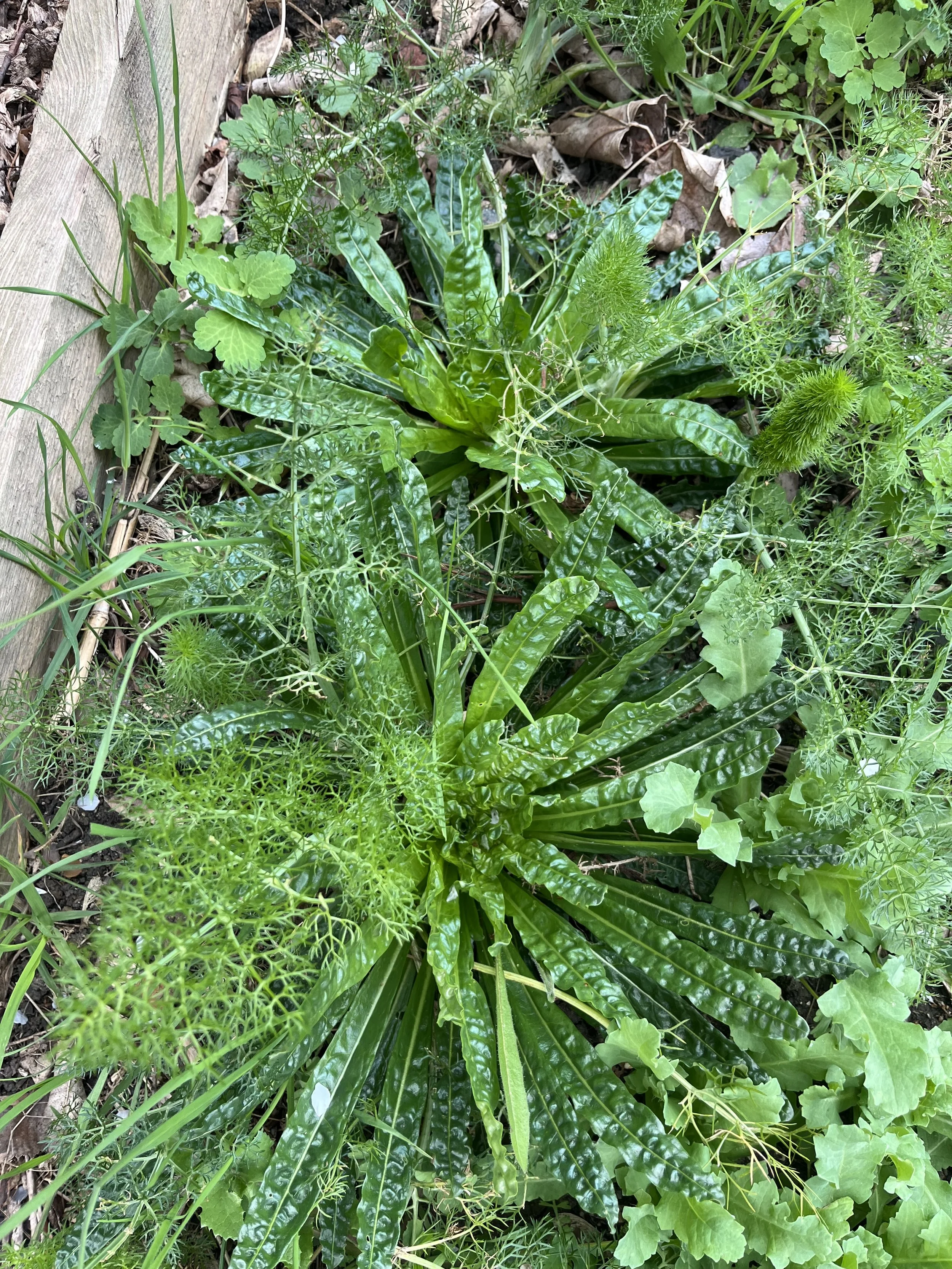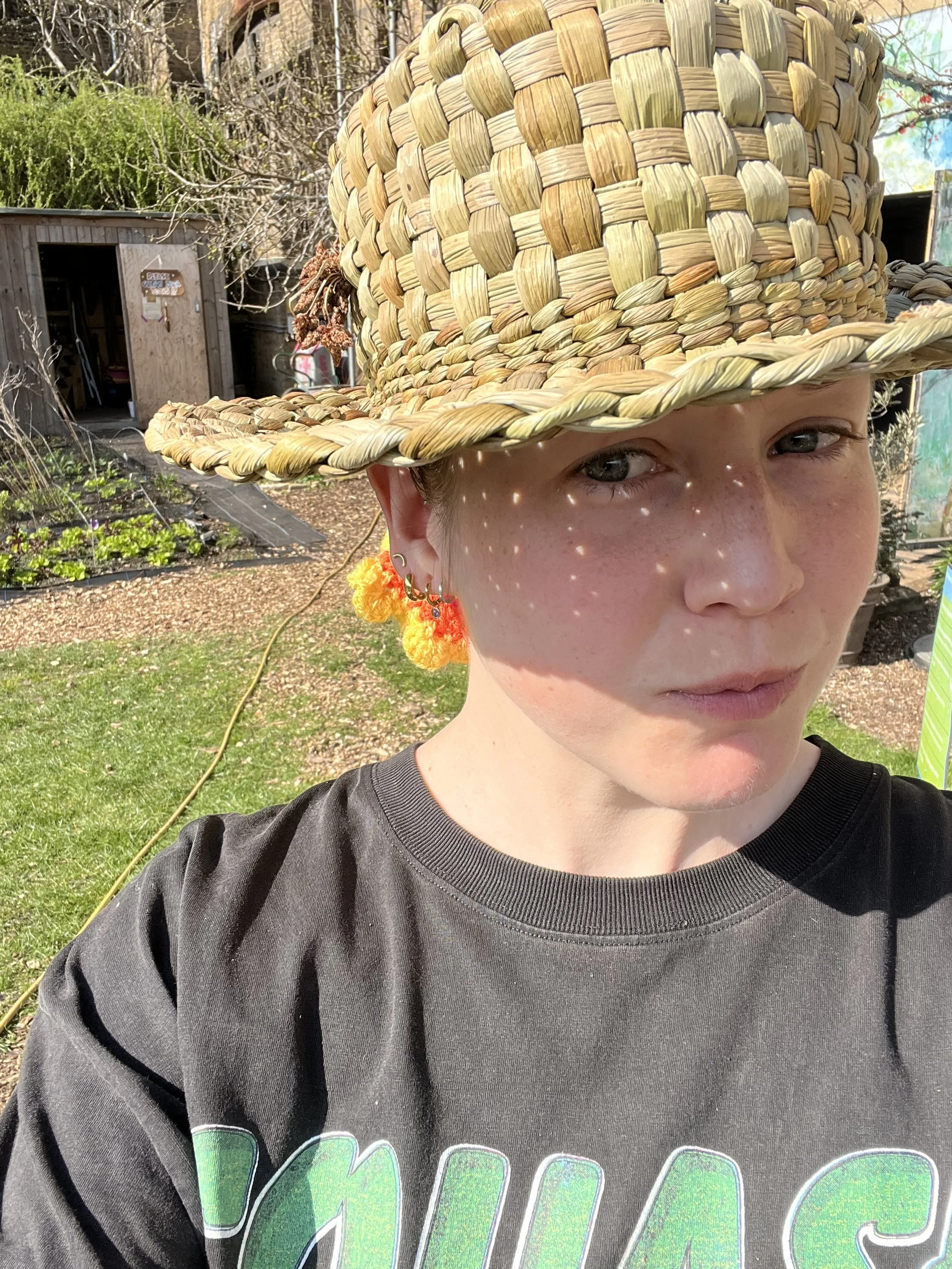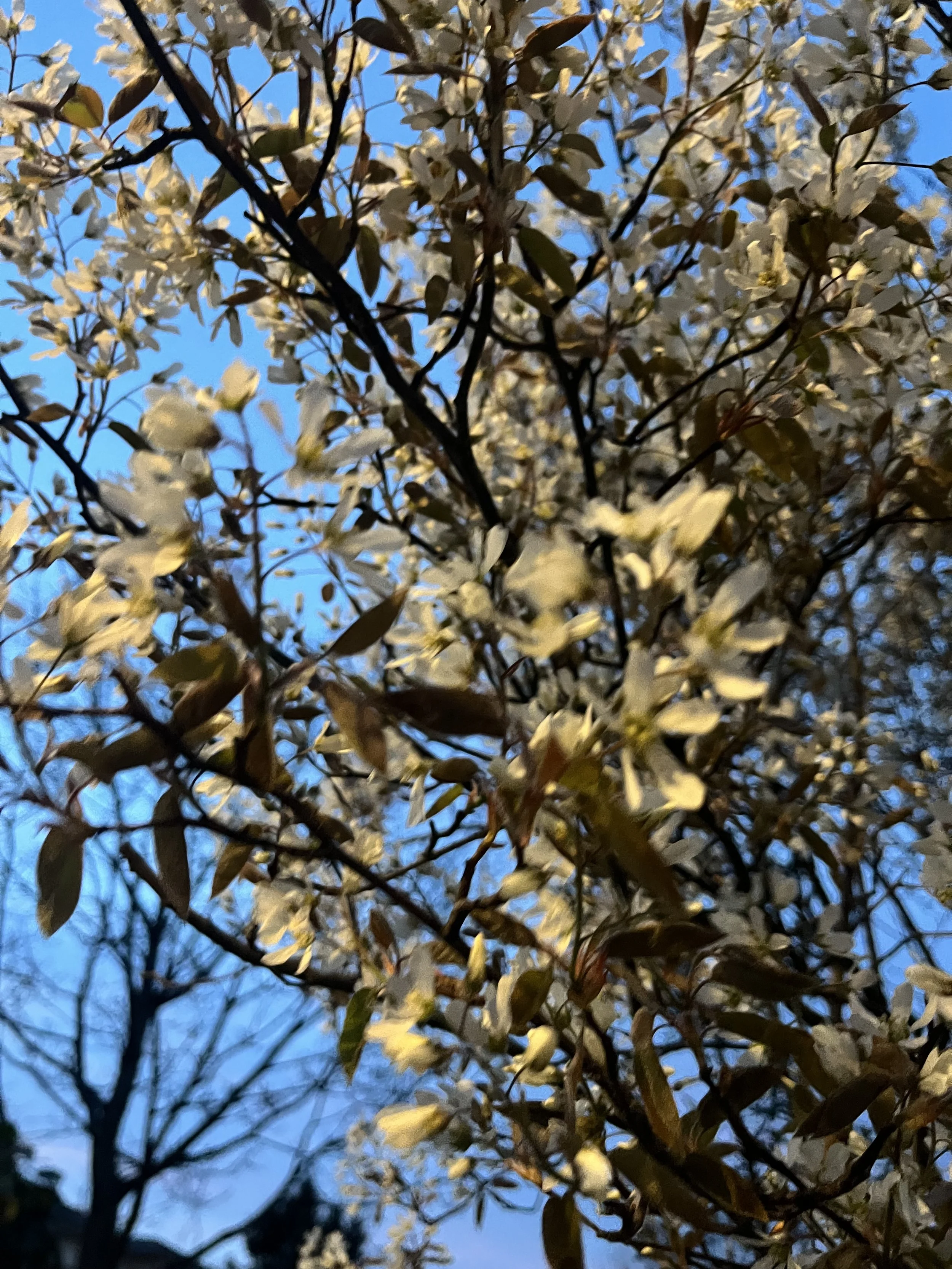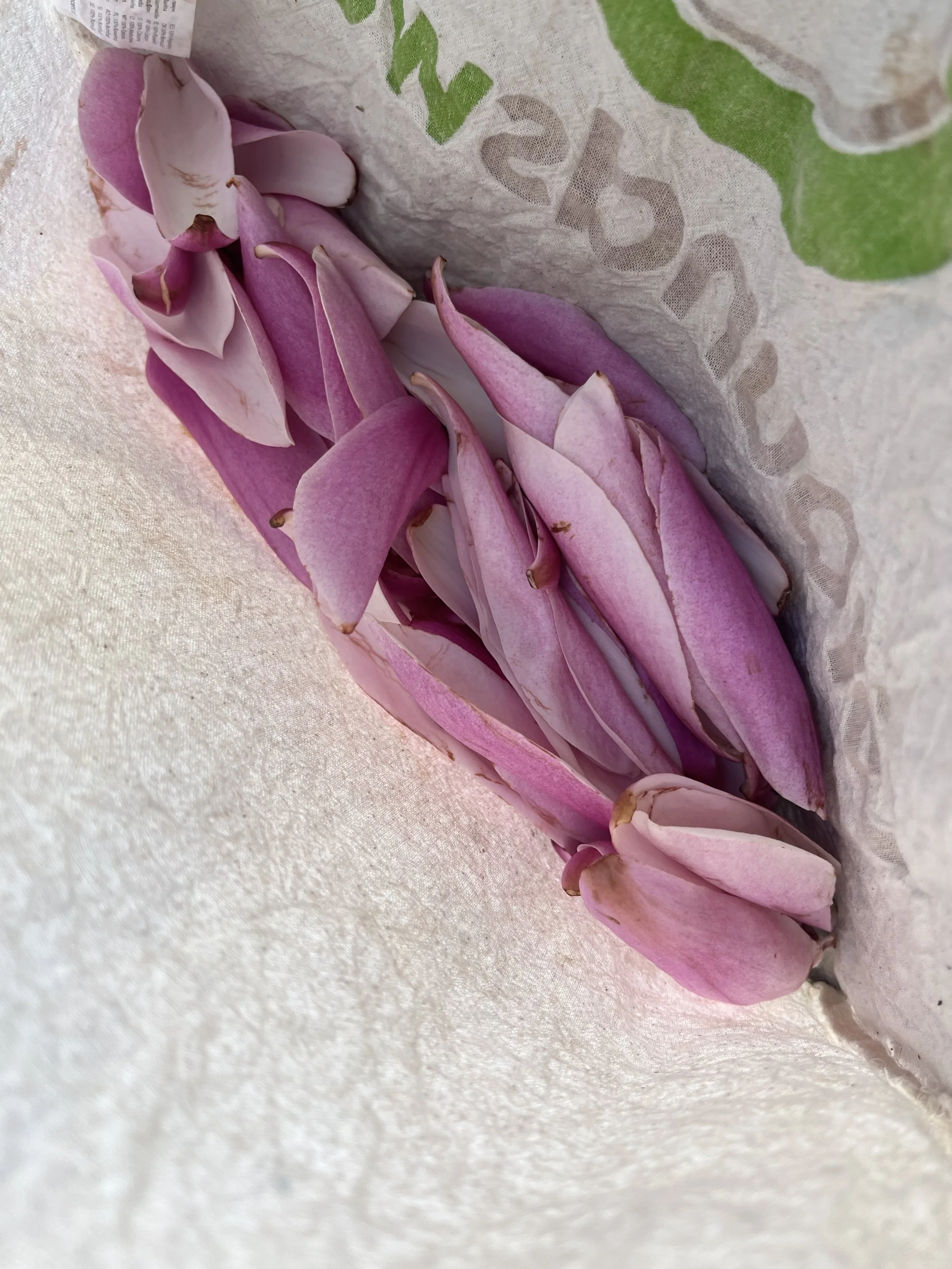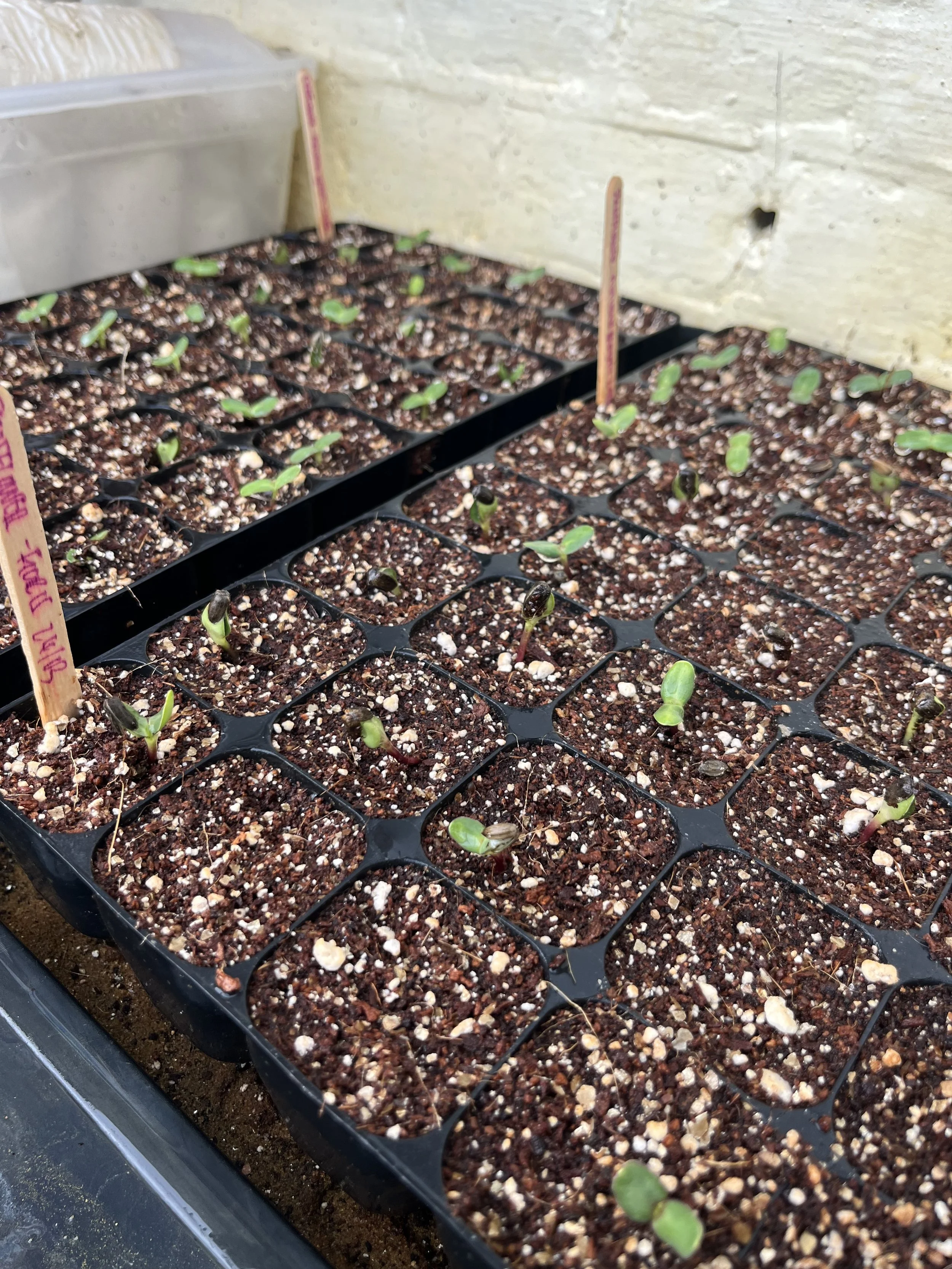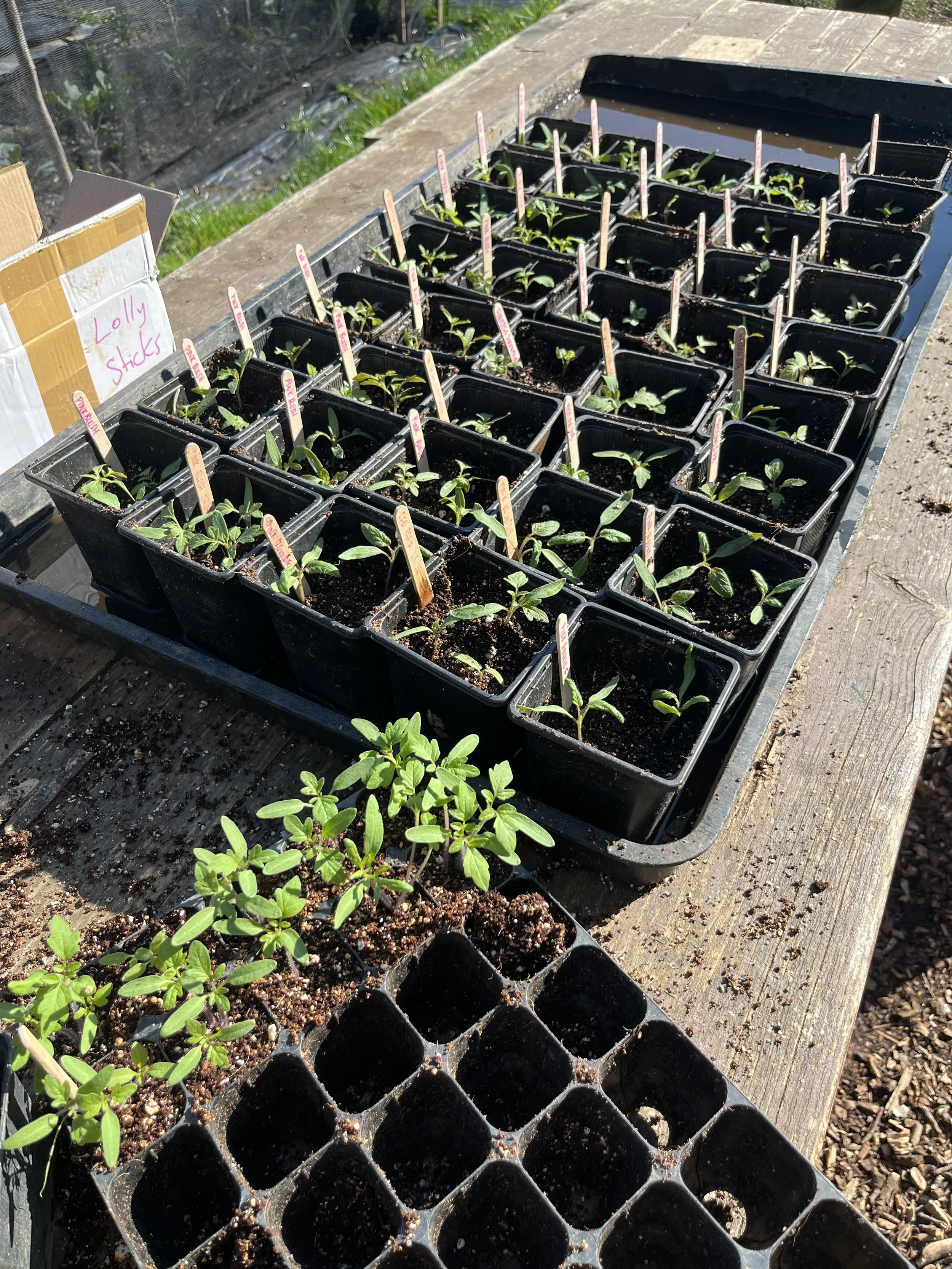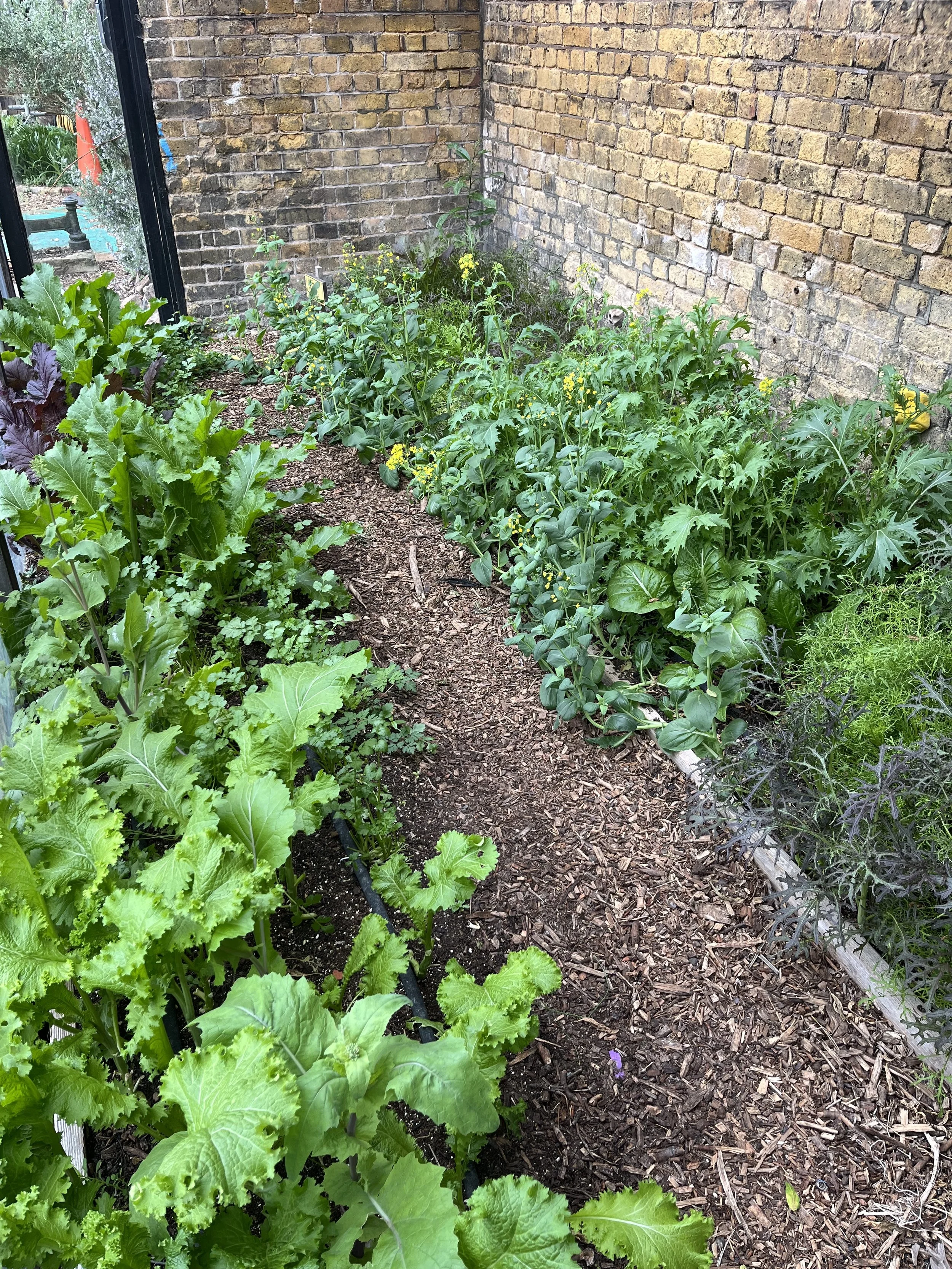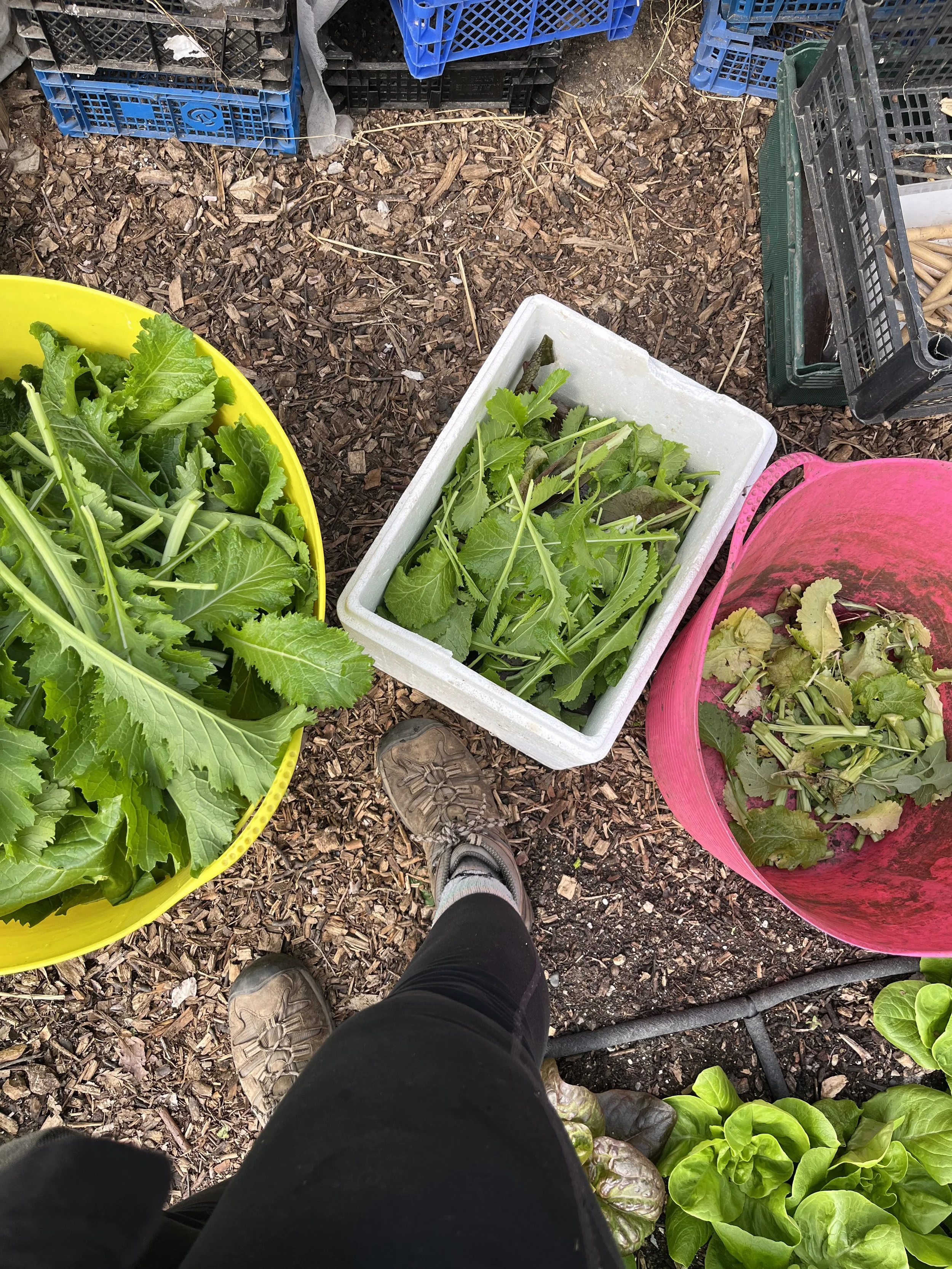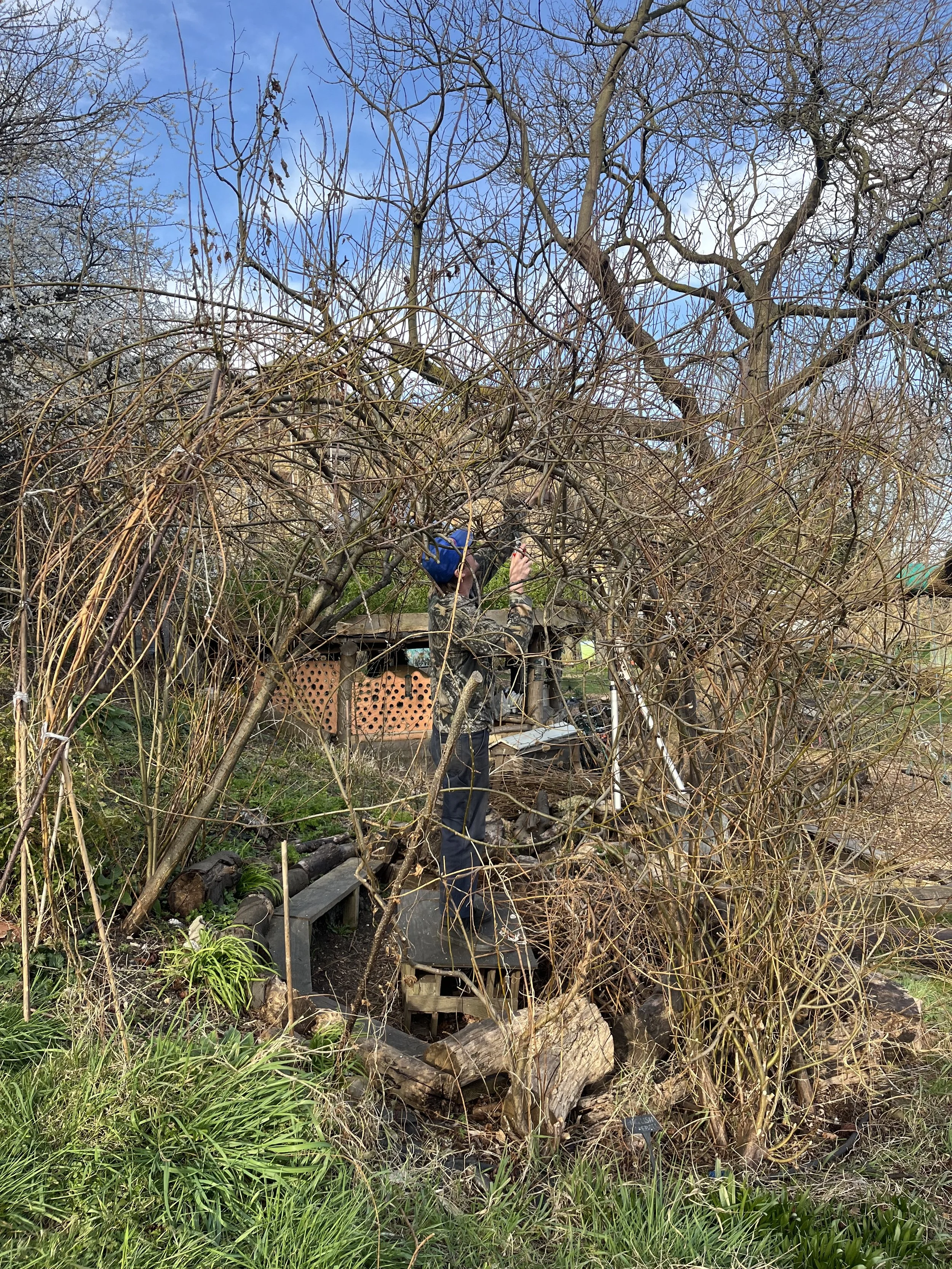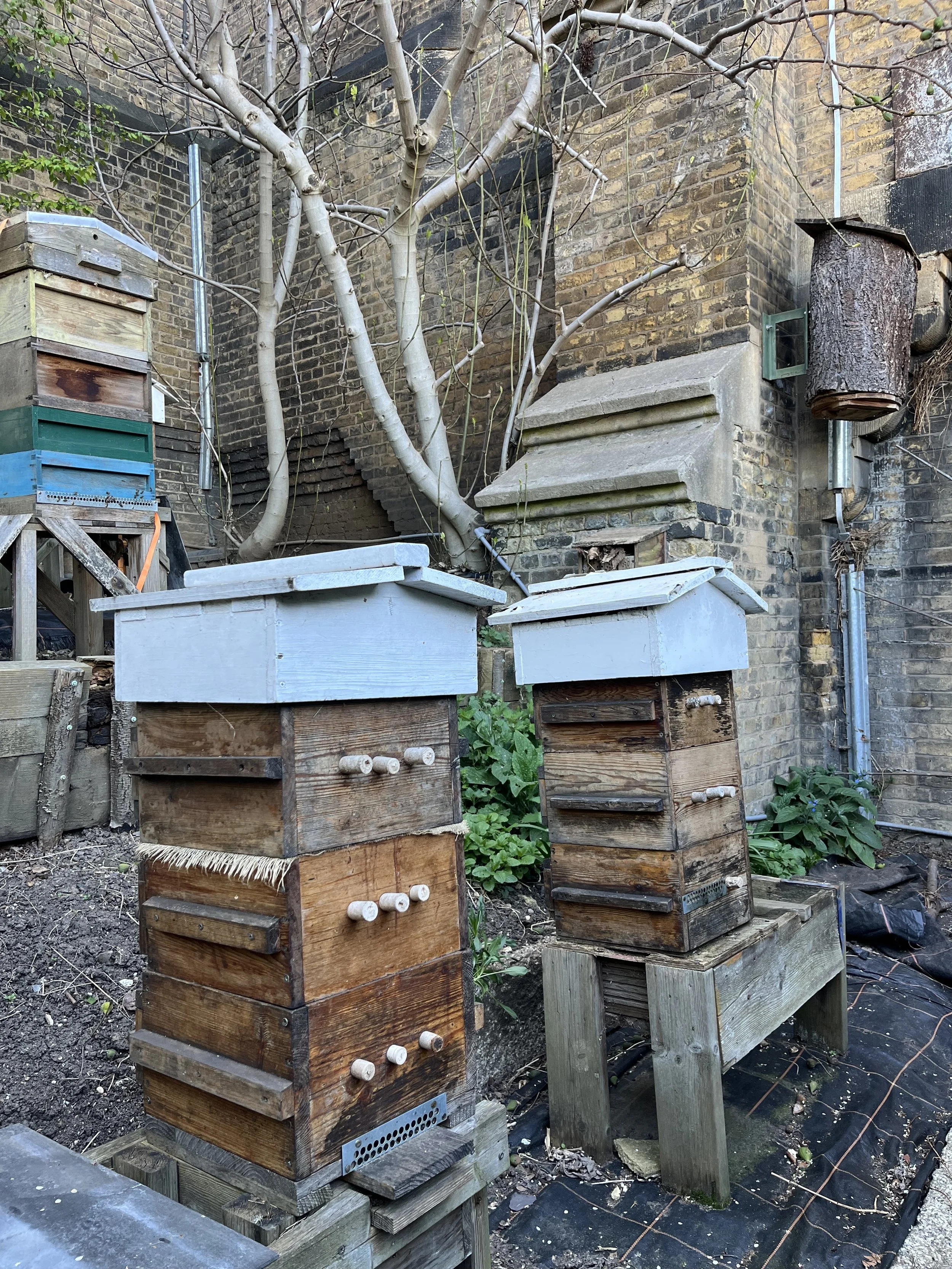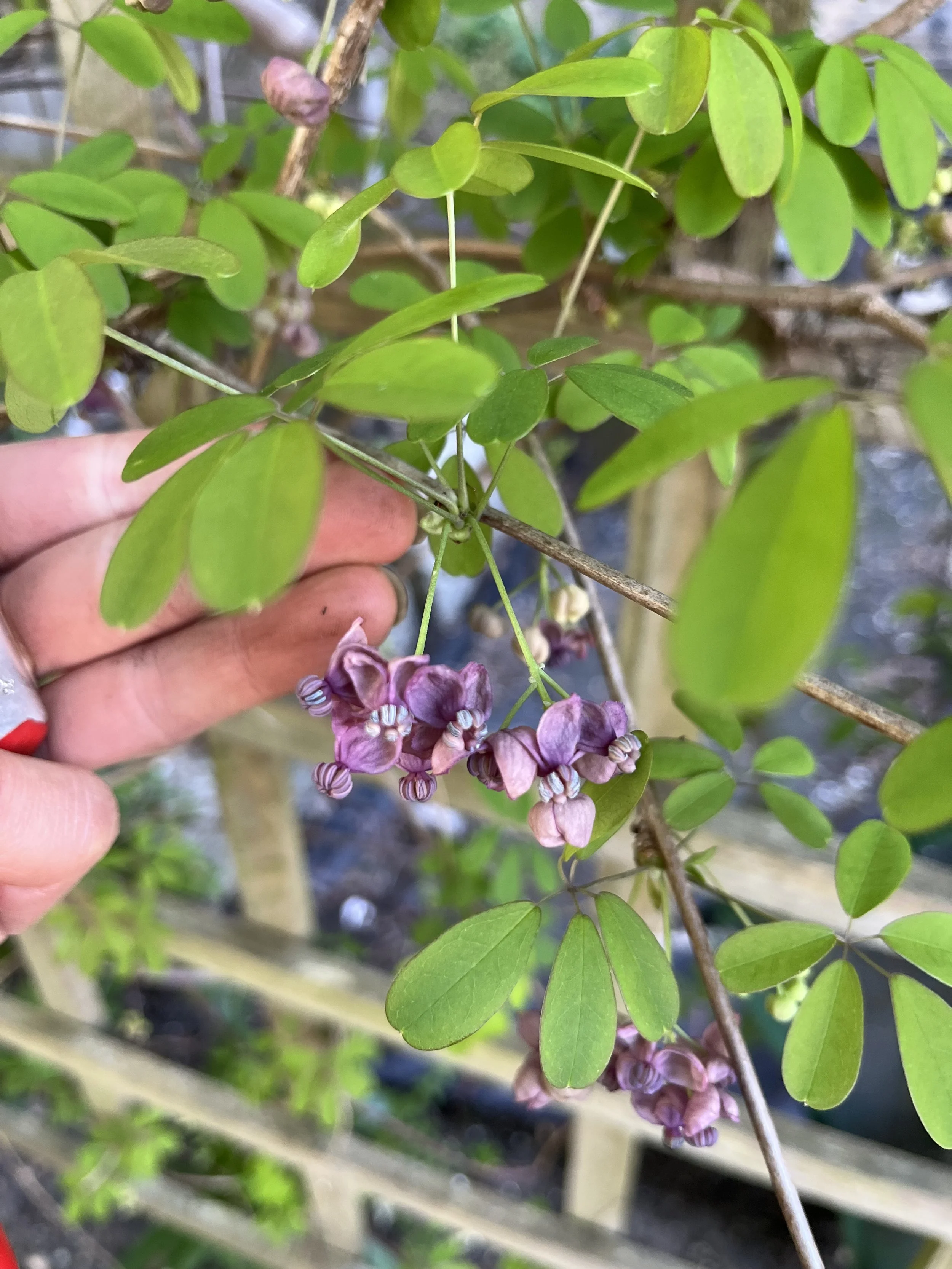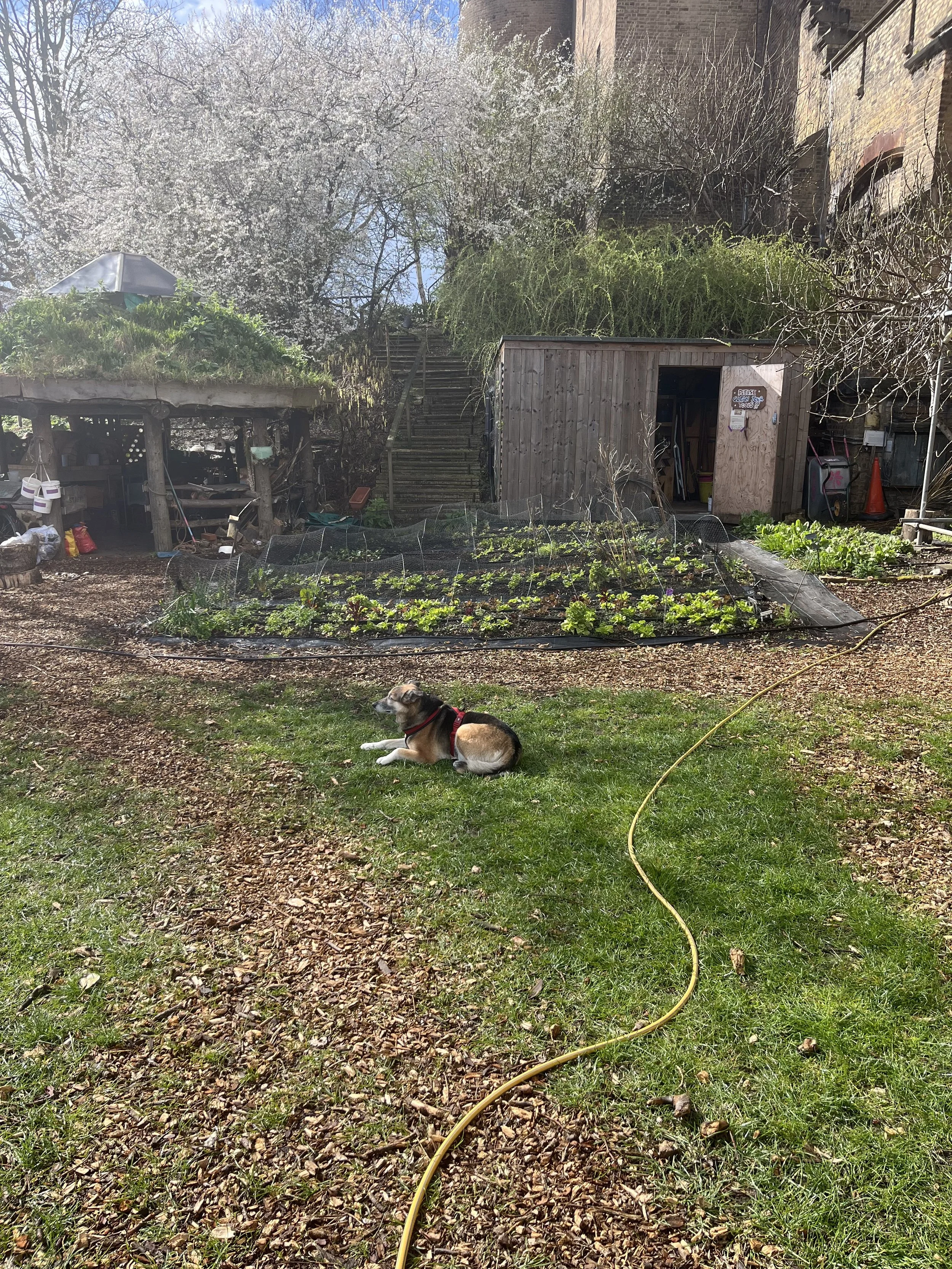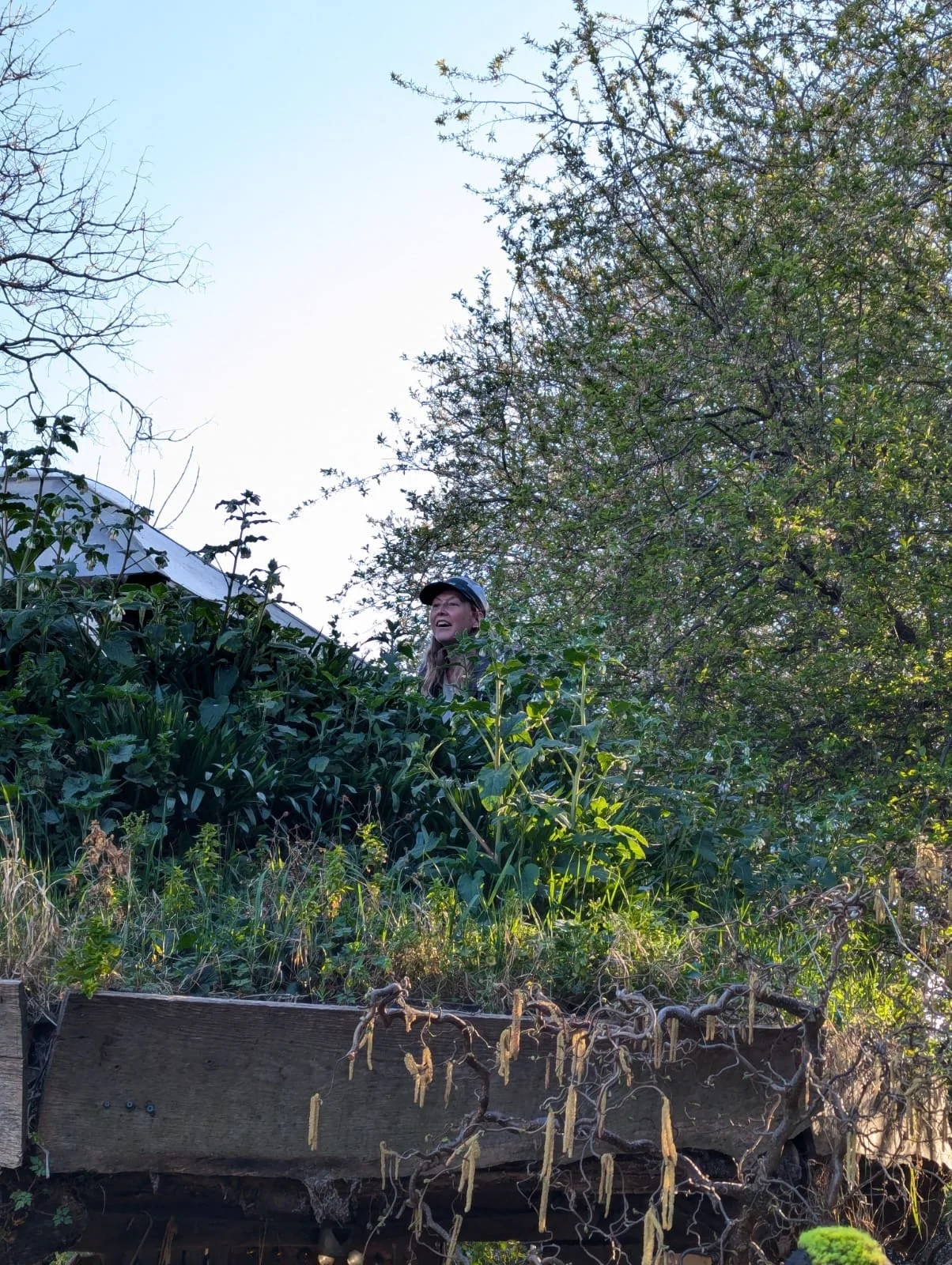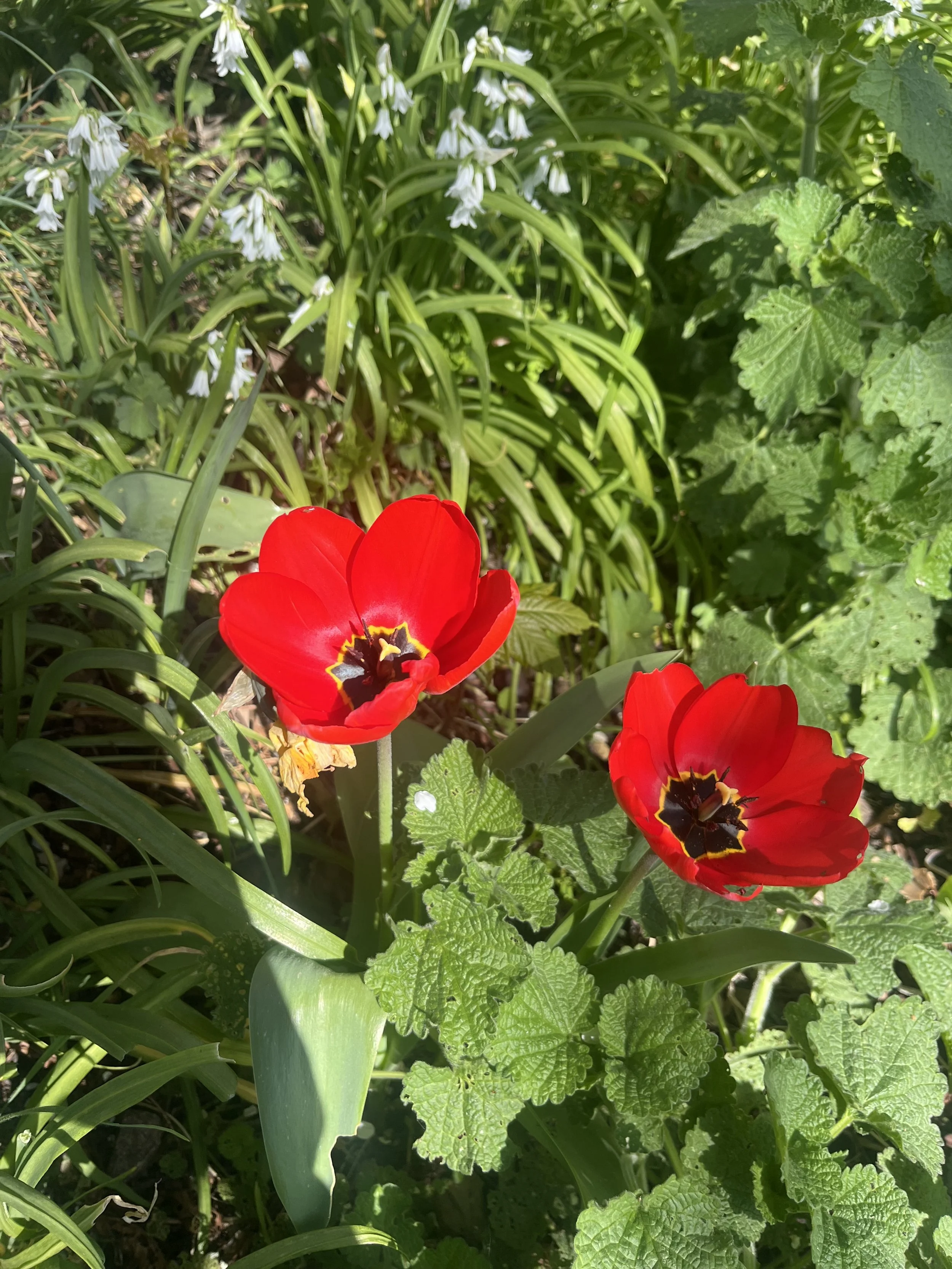Month in the life of an urban gardener: March 2025.
The tasks, problem solving, wildlife spots, learnings and reflections from an organic food grower in a North London kitchen garden.
Welcome to this separate reflection — as part of the Food-Fibre-Fashion publication — on what it’s like to be an urban organic food grower. This started as short snappy videos to condense moments across a month, before realising that actually the narrative and context behind them could be useful, whether successes or mistakes.
As this is part of the wider Food-Fibre-Fashion publication that shares essays, articles and resource newsletters, there will be stories and musings to raise your awareness of how interconnected these systems are, even when we’re looking in small scale, such as an urban garden.
Watch reels of previous months here → February 2025. / January 2025. / December 2024. / November 2024. / October 2024. / September 2024. / August 2024. / July 2024. / June 2024. / May 2024. / April 2024. / March 2024. / February 2024. / January 2024. / December 2023. / November 2023. / October 2023. / September 2023. / August 2023. / July 2023. / June 2023. / May 2023. / April 2023. / March 2023.
This is the seventeenth in this series of articles — A Month in the Life of an Urban Gardener. To read about the context of where I work, head to the first article.
Watch March 2025 in the form of a reel here.
You can also listen as a podcast on Spotify, Apple Podcasts — and below →
Images: 1. Daffodils coming up in borders; 2. Medicinal herb area with questionable medicinal plants (dog violet and nigella) interspersed with lemon balm, wood avens and lavender; 3. Flowers on a jostaberry (that confirmed it was a jostaberry).
Spring.
We left February and entered March with full spring force. Everything was suddenly blossoming and colourful and bushy. Rhubarb stems were chunking up, blackthorn had flowers, and wildlife was literally moving. Which was delightful, though did bring out the overwhelm. February had felt nice in terms of checking off tasks, and was still somewhat winter weather, but then suddenly I was wearing a straw hat, the sunscreen was on, and sowing had begun proper.
Images: 1. Rhubarb leaves and stems; 2. Little toad getting a froggy back from a bigger toad; 3. Weld, fennel and poppies growing harmoniously.
We’d decided to experiment with tapping birch sap, using acquired maple syrup bottles with an opening large enough to slot onto a branch. Birch sap is basically a slightly flavoured water. Colleagues played with boiling the sap in order to make a syrup, but was so energy intensive. Currently there’s about 20ml of amber-coloured liquid in another maple syrup bottle made from litres of tapped sap collected over a few days — for someone to eventually ingest. The sap stopped flowing upwards as leaves came into bud, and the experiment was forced to stop.
Images: 1. Silver birch "forest" interspersed with Douglas fir to resemble Fontainebleau; 2. Detail of silver birch bark; 3. Cutting a lateral branch to allow sap to flow out into a bottle; 4. Transferring collected sap into a bigger container.
We had daffodils everywhere. I’d foraged some only-slightly-bruised magnolia petals off the street with the aim of pickling them, though obviously they sat in a paper bag wilting because I didn’t get around to it. And the sight of an Amelanchier in blossom was an indicator I had one in my estate all along.
Images: 1. Wearing a straw hat to protect from the hot March sun; 2. Amelanchier in blossom (Juneberry); 3. Foraged magnolia petals in a tote bag.
Sowing and potting on.
I believe I spent 4 full days doing the sowing and potting on of various crops, neck craned over the table, soggy fingers from wet soil and sore feet from standing still. It was a major game of moving the seedling trays around in the glasshouse to make room for the next batch, leaving notes on the lolly sticks as reminders of whether the flowers needed heat or no heat, cover or uncovered.
Some flower seeds had been sown in February as they prefer cold, or a sort of acclimatisation. These, including scabious, wallflowers and tagetes, were potted on and in fact the camomiles that had been slowly coming into growth over winter and spring were able to be planted out into Herb Terrace with spares potted up. My major plan had been to sow some flowers whenever I was doing other sowing in order to get through them — and not forget. I had a system of labelling to know what seeds needed specific conditions or months, and March was for sunflowers. This is where the jigsaw puzzle was intense — I couldn’t quite prioritise flowers when our original main purpose was growing food, particularly when some trays needed the heat pads and tomatoes were coming, though this is why in the past we haven’t had enough flowers around the site. I stuck with it and now we have lots of flowers coming, albeit annuals that’ll provide only temporary blooms.
Images: 1. Good seed sowing mix of coir, vermiculite, perlite and seaweed meal; 2. Chard seeds in my hand; 3. Sunflower germination.
Lettuce was sown in February so these were pricked out into 30 trays of 30 seedlings; a lot of lettuce ready to replace the bolted plants the following month. Tomatoes were also pricked out; we needed 80 but of course sowed around 200, just in case. Chives, garlic chives, parsley and coriander were all potted on. A couple trays of chard were sown, and more kale. Making room for sowing trays is one thing, but then as soon as you pot on you need to consider what can be planted outside to make room. Cold frames are useful as a limbo, to hold the seedlings with some warmth and shelter until it’s time, but these also get full in March.
I also did woad and Japanese Indigo to top up my dye plants.
Images: 1. Potting on tomato seedlings; 2. Trays of pricked out lettuce and mustards; 3. Scabious roots ready to be freed.
Harvesting.
The glasshouse and polytunnels were tall with mustard greens and lettuces that needed to be harvested so we could replace the crops. Because the temperature had been fluctuating to single digits, this can cause a lot of crops to have poor or bitter taste (imagine as the temperature goes up and down, so do the sugars and nutrients). And we also hadn’t sown successional crops early enough. This ultimately led to a lot of wasted greens — into the compost rather than consumption — and not all crops were able to be removed because there were no replacements. The good greens were donated to the National Food Service though.
Due to the jigsaw puzzle already mentioned of making room for seedlings, some stuff simply had to go out somewhere and so ends of beds were utilised. We’ll likely have this higgledy schedule for years to come as realistically the weather and temperature won’t stabilise — and neither will our ability to plan for it.
Images: 1. Glasshouse full and tall with bolting mustard greens needing to be harvested; 2. Harvesting greens into those for cooking, for salad and for compost; 3. River the cat sits on the propagation bench in the polytunnel getting warm.
Pruning.
The last bits of pruning needed to be complete, before spring came properly and sap rose, meaning the trees and bushes were no longer dormant. Pruning when sap is flowing isn’t ideal for the health of a plant as its energy is both needed and used for growing, and sap could run out from any cuts so preventing it from using it for the growth, plus making it susceptible to pathogens.
The corkscrew hazels needed a quick tidy up, with some stool whips growing straight and dead or died back branches removing. Accidentally flicking the catkins released a stream of pollen visible on the afternoon sunlight. Not great for a person with tree pollen allergies, but very fascinating. That it grows primarily in this corkscrew shape is ridiculous; curly bits I’d pruned off I kept to make an artwork with.
The persimmon also needed tidying, particularly to tie up extension growth to train it as the espalier it’s supposed to be. This is why we save bike inner tubes so the branches are pulled where they’re needed, but can stretch as the wind blows or as the branch grows.
My colleagues took turns to tidy up the willow dome; cutting away dead bits and digging a trough to collect rainwater so that any new whips would stay alive once rooted. It has become more of a willow arch, which is fine, but visitors use it as a secret hideout.
Images: 1. Trained persimmon tree; 2. Corkscrew hazel from below on a blue sky afternoon; 3. Colleague pruning dead bits off the willow dome.
Maintenance.
Weeding my flax beds —
Preparations were required to clear my miniplot bed of last year’s flax straw. Full of nasturtium seedlings (that were potted on), horse chestnut husks (that were bagged to do something arty with), spurge (which was composted) and magenta tree spinach (potted on if good looking). This bed would be sown in April with a super small “population” mix of various flaxseeds and linseeds to grow a diverse crop that I could select the best seeds from. I was undertaking a seed production course and this was one of my portfolio crops. The other bed was full of bindweed and couch grass, really not very nice. Other folk had attempted to sow wildflower seed here, which should’ve been fine with the poor soil, but the pernicious weeds obviously outcompeted. Though at least I obtained the bed back temporarily. This would be sown with flaxseed and linseed yet instead in separated areas and in drills as a more controlled experiment.
I’d come to these decisions after discussion with who can only be described as flax gurus; someone who’s researching flax for bioregional resilience, so full of wisdom and learnings from flax growing and processing communities of the UK, Europe and North America / and then someone who cultivates flax and linseed on large scale in Gloucestershire, though also builds coracles and teaches processing. It’s a delight to know and receive tidbits from these. Read about Zoe Gilbertson and her research here, and look to Flaxland for Simon and Ann Cooper here.
Images: 1. Miniplot flax bed before weeding; 2. Miniplot flax bed post-weeding with a mallow left for later removal; 3. Trug of horse chestnut husks for later use.
Other activities —
We were otherwise doing little bits of tidying and sorting, such as the superb organisation from a volunteer (who credited her ADHD brain) in tying together bread crates to create boxes for coppiced hazel timber. Or a colleague finding pockets of time to continue making a saw horse out of said hazel timber. I may not have recorded everything that had happened, particularly as this is my diary, but it felt as though we’d left those tasks behind and could only now focus on the growing. I did have a sense though that we were on top of the maintenance of the grounds more this year than last.
So much so, that on one Thursday we played a game of Hide and Seek for my colleague’s birthday. One volunteer’s hiding place is a secret that we’ll never discover. I hid on the roundhouse roof and revelled in how folk would walk past and I was invisible. It really gives you an alternative perspective of the garden, particularly when the bees are buzzing around and you’re concerned that if you move the roof will cave in under your weight. I’ve got other hiding places in mind for our next game.
Images: 1. My hiding place up on the roundhouse roof was discovered; 2. Frogspawn collected in a jar to be transported to another pond; 3. Bread crates tied together to creates boxes to store hazel timber.
Beekeeping.
I’d gone to feed the worms, who live behind the shed in a shaded area just below the apiary. I looked up and spotted honeybee foragers going in and out of the warre hive — one of the hives I’d deemed dead. Shocked, I went immediately to look in and also discovered the national hive busy. It wasn’t even a particularly warm day, but they’d clearly decided it was time they got going. I hadn’t yet done all the maintenance work I’d wanted to do in there, such as changing the stands over, so now I was going to have to hotfoot it with the tasks before it got too warm and I’d be disrupting their flight path, and also to make it nicer for them.
Images: 1. Worms being fed after winter; 2. Apiary with two warre hives in front, national hive in back and a log hive on the wall; 3. Chocolate vine in flower.
Traineeship.
Two days were also taken up for interviewing the next cohort of garden trainees. These four people would become engrained in our team from April through October, learning how to be food growers. Interviewing and being interviewed is tough; this isn’t even for a paid role, but is a role that will catapult you into the horticultural sector in a more experienced way than paying for a Level 2 would. That was my route anyway, and others alongside me. We’re perhaps hindered because we don’t have formal qualifications, though we can recognise more systemically what needs to be done in managing various spaces (and the people with them). So we have to be fairly strict with our criteria — selecting those that we feel are actively striving to be in the food growing space, rather than it just being a nice idea.
During this week I was also guardian for my mum’s dog Skye. She’d visited the year prior so was familiar with the garden, and I was more familiar of her, which made for a less stressful time. She sat in the interviews with us and was actually a good judge of character.
Images: 1. Skye responded to my call while exploring the garden; 2. Skye relaxing in the garden; 3. Skye having a doze in the interview room.
Seed Swap.
At the end of March for our single Saturday volunteering session we simultaneously hosted a seed swap, considering this is the time folk will get going. One of our trainees had become very vested in seed sovereignty, so she hosted the drop-in. Though we only advertise on Instagram, we did have non-climber visitors who’d come especially, which is our aim in opening up the space. There was a chap who’d worked on activism against GM seeds, a local with an allotment, a past-volunteer, and our CEO also came along to find some herb seeds for his balcony.
Images: 1. Metal tin for storing paper seed packets; 2. Someone rifling through the herb seed box; 3. Someone holding a selection of chilli and pepper seeds.
Grafting day.
Part of my Level 3 Certificate in Community Orcharding involved in-person training days. March was about grafting, now that buds were about to burst.
First up we visited The Castle garden where we had a discussion about things we’d learnt or been surprised about during the course so far, and then I was able to give a very brief overview of our garden’s set up. Then a walk down the road to Edible Landscapes for the practical session.
This involved practicing our whip and tongue graft on fake scions and rootstocks — small pieces of pliable apple tree water shoots — before we were allowed to take a real rootstock. Rootstocks are specific fruit trees that have been bred for vigour, and are distinguished by codes, such as for apple, M25 (standard / vigorous) and M9 (dwarf). You select a rootstock so you have some idea of what habit the tree will have (fast growing and tall, or short-lived and short). From this you then choose your cultivar (cultivated variety), and graft a scion (pruning of this year’s growth) onto the rootstock ensuring the cambium layers of both meet. They’ll “graft” together — if successful — and you’ll have a tree of your chosen vigour with a particular fruit variety.
I’d been too slow with my practice grafts, I’d say because I didn’t get in quick enough so had the thinnest pieces to experiment with and difficulty was increased. We had to be assessed, and fortunately I had two solid examples so passed. Everyone had moved on to grafting their rootstock by this point so I became immensely stressed. Plus thunder had come and the end of the session was nearing. With some coercion, my whip and tongue graft on the semi-vigorous M116 rootstock with medium vigour scion Golden Knob was wrapped up and I shakily walked home, full of adrenalin and emotion and limited confidence.
I potted on my rootstock into soil when I got home and kept it watered with real water and motivational thoughts.
Images: 1. One of my practice whip and tongue grafts with well-matched cambium and "church window"; 2. Bag of medium vigour scions; 3. My final rootstock whip and tongue graft taped up.
It’s 3rd June. I really don’t understand why I’ve flagged on writing up these diary posts. There’s clearly something about them that I find heavy. So unfortunately they make less sense when the season has dramatically shifted, from early spring to early summer. Like now I’m three weeks away from Summer Solstice. Though I personally do find it useful to look back and consider; it’s a reminder that there are still seasons and cycles. Do you find these posts interesting? What else if anything do you want to know or hear about? Are the narrations helpful?
I’m also going to take the opportunity to highlight my Summertime Nature Connection workshops, on the offchance you’re in or around London or know someone who is, who would like to explore urban spaces with fresh eyes, linking textiles and food.
Images: 1. Photo of me up on the roundhouse roof during our game of Hide and Seek; 2. A handful of sunflower seeds for sowing; 3. Red anemone-like tulips amidst white dead nettle and three-cornered leek foliage.


